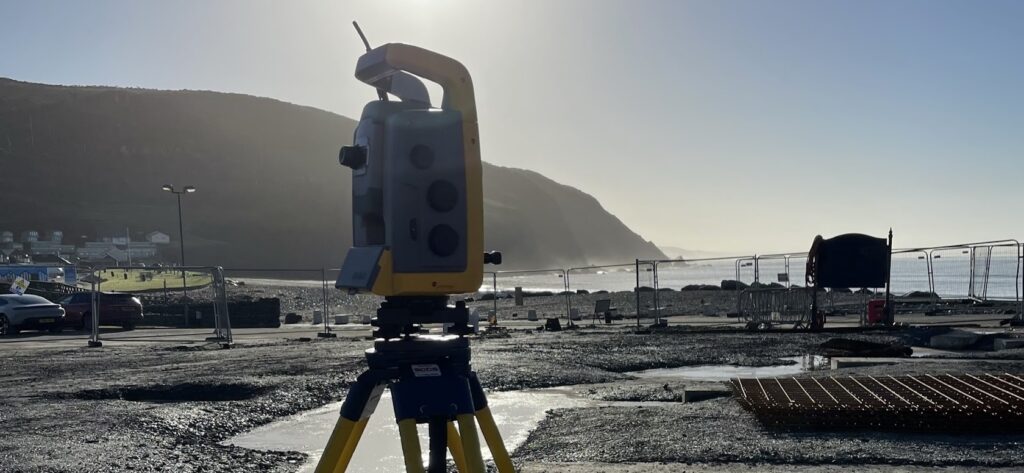The Benefits of Topographical Surveying in Construction and Planning
Vital Devices and Strategies in Setting Out Design
The technique of laying out engineering relies greatly on a collection of essential devices and techniques that underpin the accuracy and performance of job execution. Instruments such as property surveyor's degrees, overall stations, and progressed GPS modern technology are essential for establishing precise reference factors. The assimilation of traditional approaches with contemporary practices, including geospatial analysis and 3D modeling, uses considerable benefits in imagining website problems. Recognizing just how these components interact is critical for minimizing errors and boosting task outcomes, yet the subtleties of their application commonly stay ignored. What effects does this hold for future engineering practices?
The Significance of Accurate Dimensions

The relevance of precise measurements expands past simple compliance; they are indispensable to the general performance of engineering procedures. Mistakes can cause material waste, project delays, and raised labor costs, eventually influencing the task's profits. Precise measurements improve the top quality of the last item, ensuring that it carries out as meant and satisfies the assumptions of stakeholders.
Moreover, the relevance of exact dimensions is noticeable in numerous design self-controls, including civil, mechanical, and electrical design. Therefore, promoting a culture that prioritizes precision is crucial for the future of engineering.
Necessary Tools for Laying Out
Laying out, a vital stage in the engineering and construction process, counts heavily on specific tools that ensure exact place and placement of structures. Amongst these tools, the property surveyor's degree sticks out, providing exact horizontal dimensions vital for establishing recommendation factors. This tool makes it possible for engineers to determine altitude adjustments and maintain uniformity throughout the project site.
The overall station is one more essential device, integrating digital distance measurement with angular dimension capabilities. This modern technology boosts effectiveness and precision in capturing spatial information, enabling reliable site format and planning.
Furthermore, the use of measuring tapes and noting devices, such as chalk lines or stakes, is essential for temporarily noting boundaries and crucial points on the site. These basic tools, though straightforward, are vital for guaranteeing clear interaction among the building team concerning project specifications.
Finally, general practitioner modern technology has actually obtained grip in laying out procedures, giving real-time placing information and dramatically boosting precision over typical approaches. Jointly, these necessary devices develop the backbone of effective setting out practices, inevitably adding to the effective execution of engineering and construction projects.
Advanced Evaluating Strategies
Advanced checking methods play an essential duty in boosting the precision and efficiency of engineering tasks. These strategies encompass a series of techniques that provide accurate information for their explanation layout and building and construction. Traditional methods, such as progressing and triangulation, have actually advanced right into a lot more advanced methods, consisting of Complete Station surveys and International Navigating Satellite Solution (GNSS)
Total Terminal gadgets integrate digital theodolites with distance dimension abilities, allowing land surveyors to gather accurate area information with fantastic rate. This innovation considerably lowers errors linked with hand-operated measurements and gives real-time data handling. GNSS provides unmatched accuracy for massive tasks by utilizing satellite signals to figure out specific positioning, which is important for straightening frameworks and guaranteeing conformity with layout specifications.
Along with these devices, advanced methods also integrate geospatial analysis and 3D modeling. These techniques enable engineers to envision surface and site problems more properly, helping with far better decision-making during the planning stage. By employing these innovative checking strategies, design jobs can attain greater accuracy in format, minimize rework, and inevitably improve overall project success.
Digital Innovation in Engineering
The combination of digital innovation has actually revolutionized engineering techniques, enhancing both productivity and accuracy throughout different self-controls. Tools such as Building Information Modeling (BIM) facilitate the visualization and monitoring of intricate tasks, enabling engineers to collaborate seamlessly and make informed choices. This innovation allows the creation of in-depth 3D designs, which can be evaluated for structural this contact form honesty and effectiveness before building begins.

The application of synthetic knowledge and device learning in design processes better boosts predictive maintenance and optimization of sources. In general, digital innovation is reshaping the design landscape, driving innovation, and making certain that tasks are finished with better performance and minimized risk.
Best Practices for Application
When applying electronic modern technology in design, it is critical to establish a tactical approach that aligns with job objectives and organizational abilities. A complete assessment of existing workflows and technology infrastructure is essential to determine voids and chances for improvement. Involving stakeholders early while doing so cultivates collaboration and guarantees that the technology meets user requirements.

Job supervisors need to adopt an iterative execution technique, enabling modifications based on real-time comments and efficiency evaluations. This nimble method not just alleviates threats but likewise advertises constant improvement by integrating lessons learned.
Verdict
To conclude, the combination of important tools and advanced techniques in setting out engineering is important for making sure accuracy in dimensions and effective job implementation. Using instruments such as property surveyor's degrees, overall terminals, and GPS modern technology, along with modern-day evaluating methods, enhances accuracy and reduces the possibility of errors. Embracing finest techniques in implementation additionally maximizes these processes, ultimately cultivating enhanced job results in the design and this link building fields.
The self-control of setting out design relies greatly on a suite of vital devices and methods that underpin the precision and effectiveness of task execution.Additionally, the significance of precise dimensions is apparent in various engineering techniques, including civil, mechanical, and electrical engineering. By using these sophisticated surveying methods, design jobs can achieve better accuracy in layout, minimize rework, and inevitably enhance overall job success.
Generally, digital modern technology is improving the design landscape, driving innovation, and making sure that tasks are completed with higher efficiency and reduced risk (setting out engineering).In final thought, the integration of essential tools and progressed techniques in establishing out design is important for making certain precision in dimensions and effective project execution